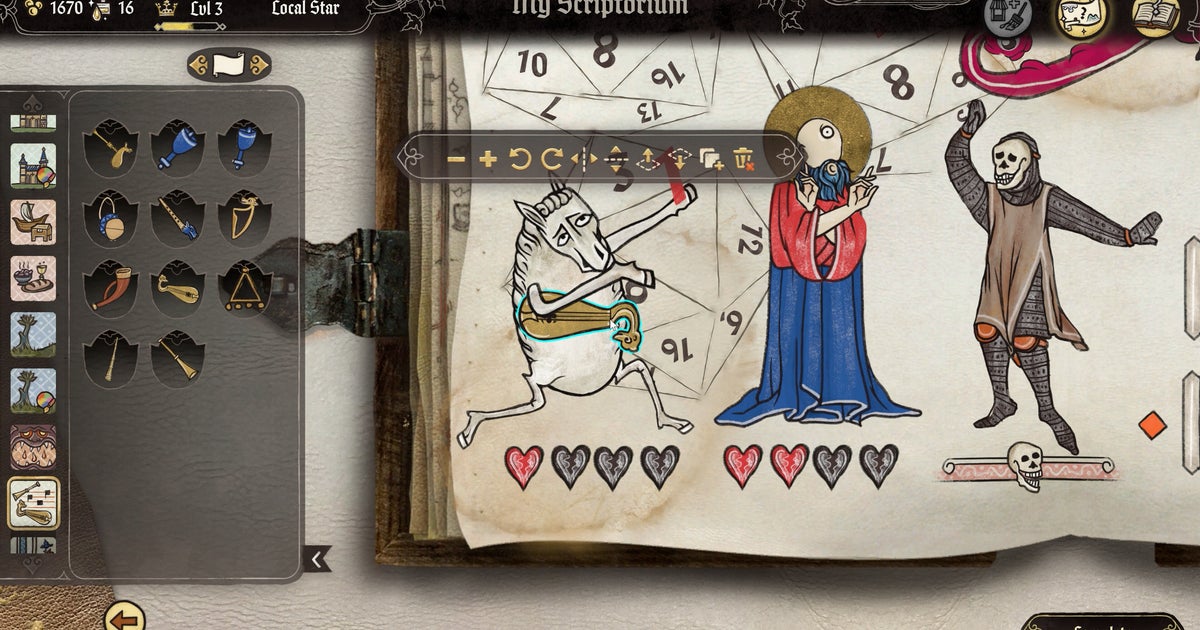
![]()
by
Evan Norris
, posted 1 hour ago / 124 Views
What better time to reinvent your long-running franchise than with the launch of a brand new console? Such is the case with Rune Factory: Guardians of Azuma, which is technically a sequel to Rune Factory 5 (one of the younger characters from that game appears all grown up here), but feels like something of a soft reboot. It features a never-before-seen country, new abilities and weapons, deeper romance options, and a brand new village rebuilding and job assignment system that substantially changes the tenor of the game.
Guardians of Azuma takes place about 50 years after a cataclysmic event called the Celestial Collapse, during which a giant object crashed into the eastern realm of Azuma, sending fragments of the earth into the sky and across the sea. This great shattering had a devastating effect on the land, draining runes — the life force of the world — of their power, causing the seasonal gods to vanish, destroying mountains, withering fields, and leaving the denizens of Azuma without hope. In this desperate time, an Earth Dancer suffering from memory loss arrives in Spring Village to return life and faith to the realm.
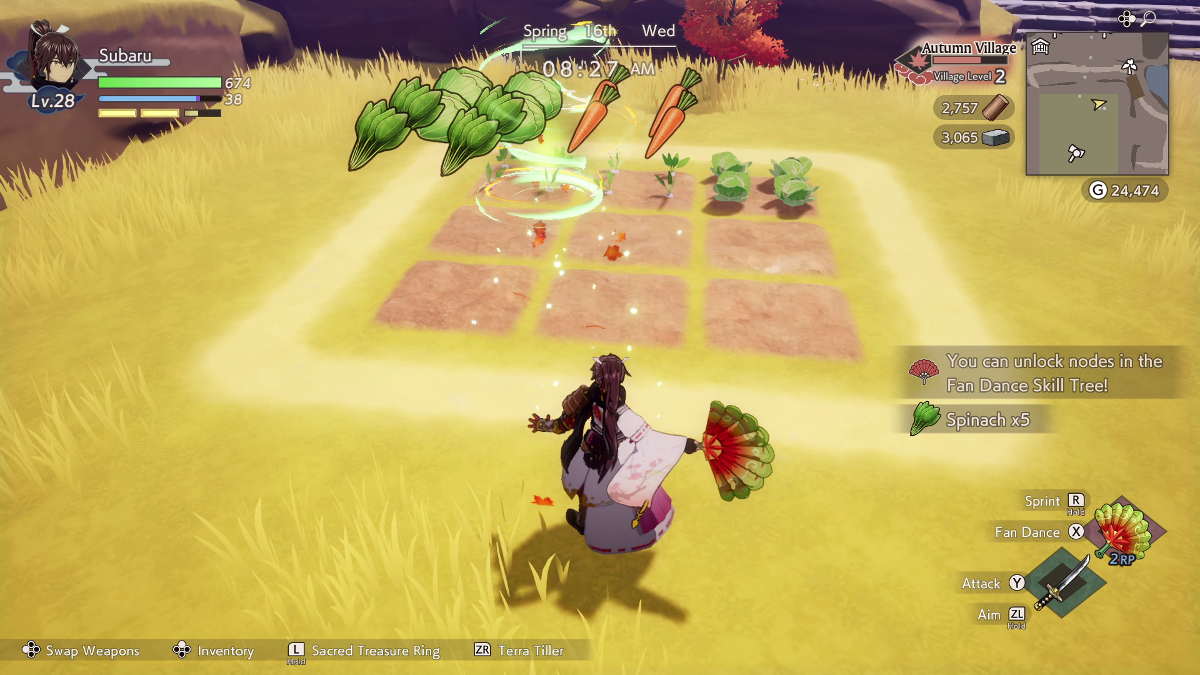
The story in Guardians of Azuma is good, if a little clichéd. Many of its ideas and themes — an amnesiac protagonist, a community rallying around a heroic figure, the return of prosperity to a withered, poisoned land — are typical of Rune Factory and the genre in general. Yet the game, like the overarching series, is not really about plot. It’s more about mood; atmosphere; forging bonds with neighbors, friends, and romantic interests; and leaving your mark on the land, both physically and symbolically. Judged on those criteria, Guardians of Azuma might be the most successful Rune Factory yet.
The recipe for success in Guardians of Azuma is a series of dovetailing, synergistic systems that reinforce and strengthen each other. In short, this is one of those video games where the individual systems aren’t exceptional on their own, but when combined they create a tapestry of rules, feedback loops, and touch points that is exceptional.
The center of this tapestry is the village. Guardians of Azuma has four seasonal villages, each with their own plots of farmland, guest-giving NPCs, patron god, and adjoining dungeon space. And each has the same expectation: fulfill your duties as village chief by working in development zones, going on adventures, and talking with residents. It’s within the confines of the development zone where the game makes its biggest, most addictive change to the Rune Factory status quo.
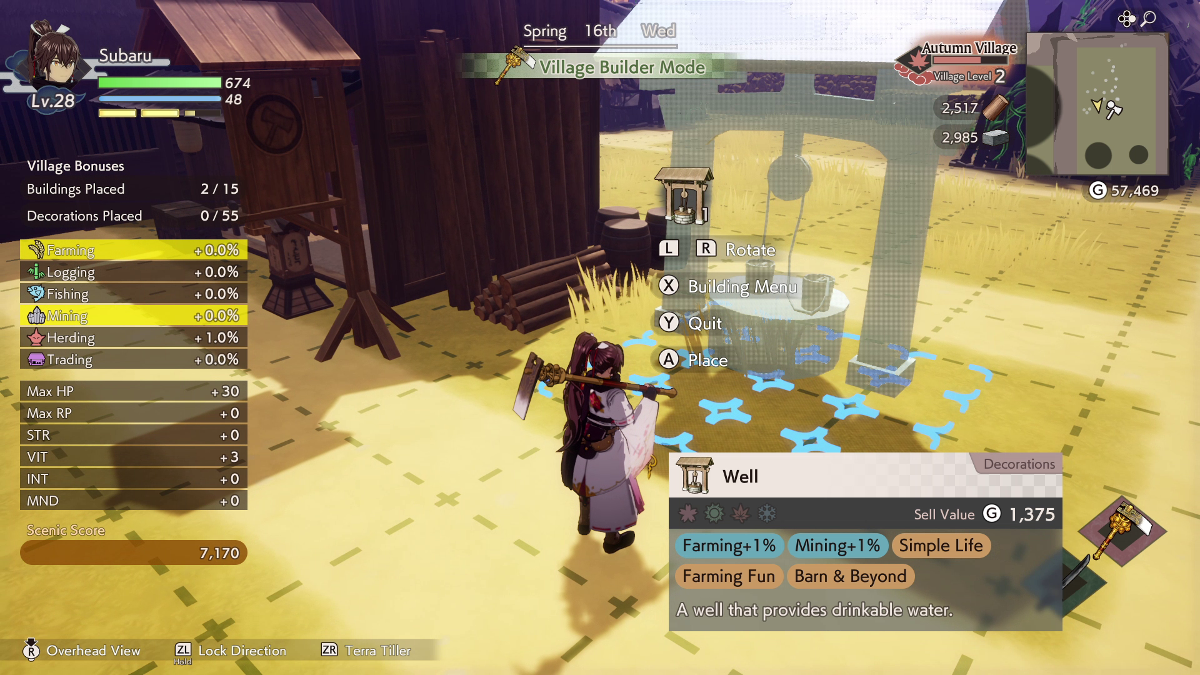
The development zone is where you’ll do all your farming — a staple of Rune Factory. You’ll till the earth, sow seeds, harvest crops, and place the literal fruits of your labor in a shipping shed to earn profits the following day. This is all par for the course. What’s different in this installment is a village rebuilding system, which allows you to clear the land of poisonous Blightbloom and then construct & place buildings, enticing people to return to each village and contribute. As you plant more crops and construct more houses, shops, and facilities, not only will more citizens flock to your hamlet, but the local deity will increase the level of the village, which allows for a larger population, new items in the shops, etc. It’s a rewarding, habit-forming process where you have the freedom to mold the village as you see fit while simultaneously enjoying a satisfying sense of progress and momentum. And things only get better when you reach level three in Spring Village.
At level three, you can assign villagers to tasks, which adds a fascinating people management aspect to the game. Villagers assigned as farmers will plant any seeds you own in open fields and paddies, water crops, harvest fully grown crops, and place those crops in the shipping shed. Those assigned as loggers will collect lumber from trees within the confines of the development zones. And those assigned as miners will return to the village with material stone and ore. You can even make a villager a trader and assign them to a café, flower shop, or smithy, and earn some business income in the process. There’s a brand new layer of town-planning gameplay here that significantly boosts the strategic potential of the series. This is no longer “Harvest Moon where you wield a sword”, as Yoshifumi Hashimoto famously put it. It’s Harvest Moon (or, more accurately, Story of Seasons) where you wield a sword and a hard hat.
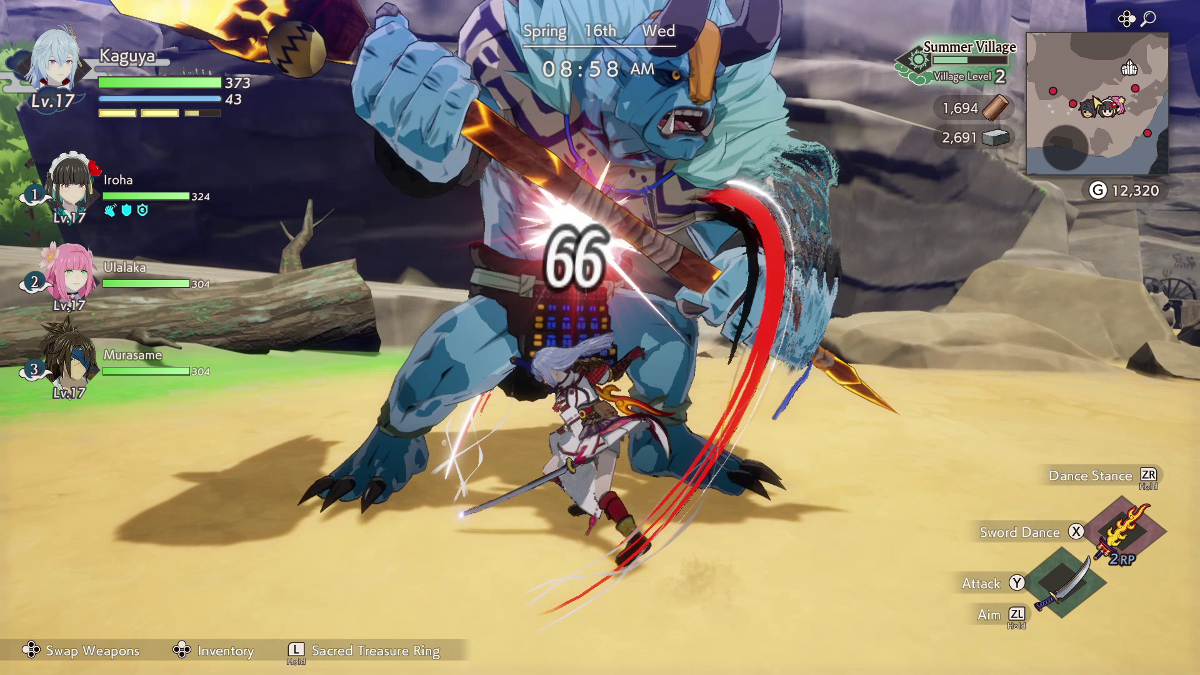
The sword is still a major part of the equation; don’t worry about that. The monsters and demons in the lands beyond each town aren’t going to slay themselves, after all. And because almost everything in Guardians of Azuma influences something else, the decisions you make in the development zone back in town will affect your performance in the monster-infested dungeons adjacent to it. By placing certain buildings and decorations, you can level up your character’s HP, Rune Points, strength, magic attack, etc. And of course you’ll need that village income to forge and upgrade your weapons and armor.
The adventuring aspect of Guardians of Azuma benefits not only from this interlocking system but from the nuts and bolts of combat, which underpin the best fighting framework in the entire series, hands down. For one, movement is exceptionally snappy and fluid here, a noticeable improvement over the somewhat wobbly physics in Rune Factory 5. For another, the new perfect dodge mechanic adds a tactical quirk whereby players can slow down time and create an opening for a focused counterattack. For yet another, the ability to form a party made up of different character types — attackers, defenders, buffers, healers — adds much-needed strategic depth. Finally, a wide assortment of weapon types, including short swords, long swords, talismans, dual blades, and bows, allows for many different offensive approaches. If there’s a downside to combat, it’s that it falls on the easy side. I suggest setting the difficulty to hard if you want to be challenged.
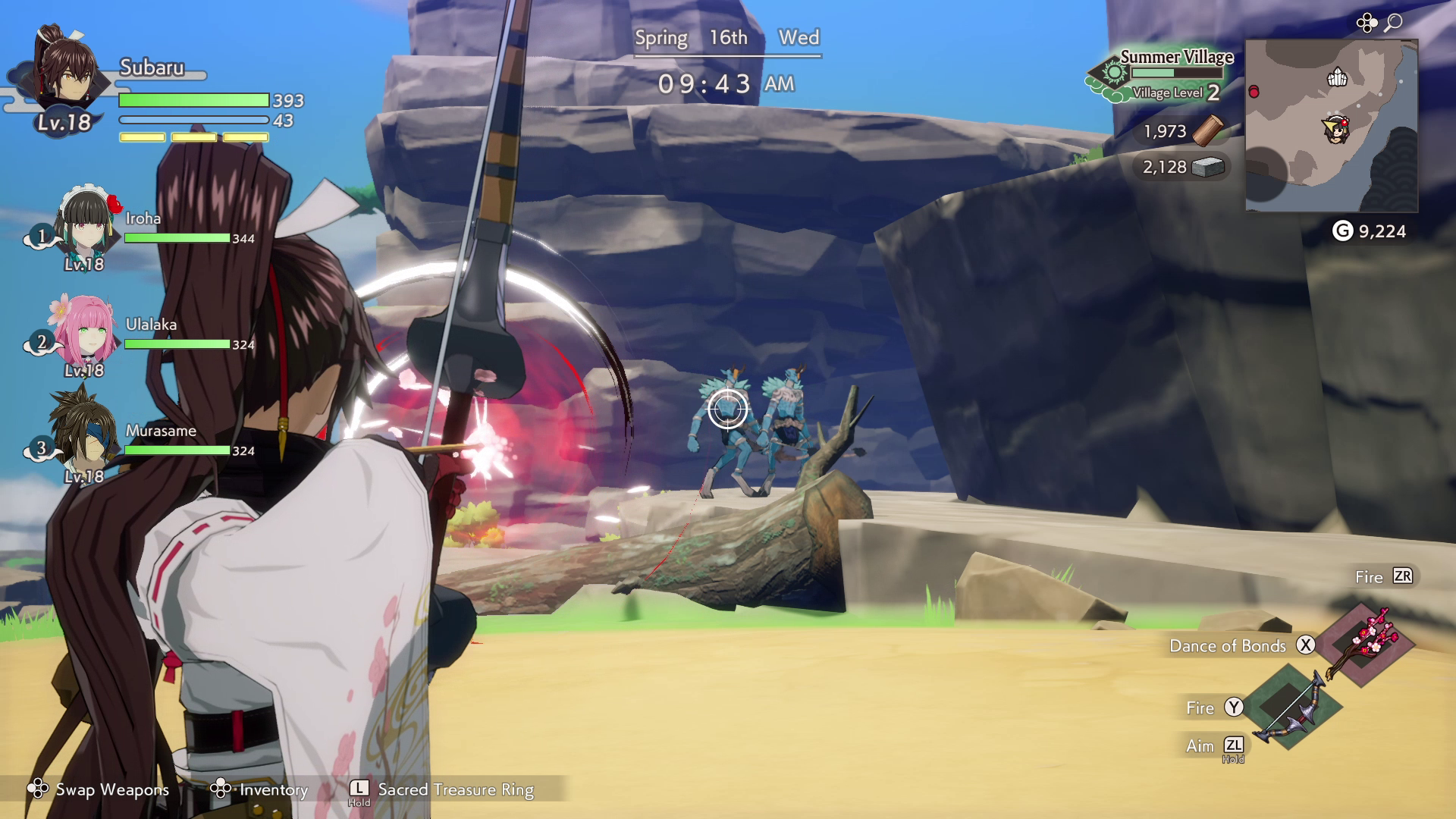
Apart from blades, talismans, and bows, you can bring Sacred Treasures, bestowed by the gods, into combat. The Sacred Drum, for example, sends out shock waves, while the Sacred Sword ignites anything in the vicinity. And, because of the game’s dovetailing design philosophy, these items also play important roles in farming. If you bang the Drum near planted seeds, you’ll spur their growth, and if you harvest fully mature vegetables and fruits with the Sword, you’ll collect only seeds, some of which have a higher level than the original crop.
That’s not the only synergistic system, though. In order to invite a villager to join your adventuring party, you must first raise the bond level between the two of you, which is a central conceit of the final main pillar of Guardians of Azuma: relationship-building. There are over 20 characters you can befriend in the game, including about a dozen you can become entangled with romantically. Luckily for players who enjoy unpacking this aspect of the game, Marvelous has seriously expanded the options available to build a strong rapport. No longer are you restricted to simple greetings and gifts. Now you can crack jokes, tell stories, walk together in the forest or over the mountain, and even go out for dinner. It’s far more robust.
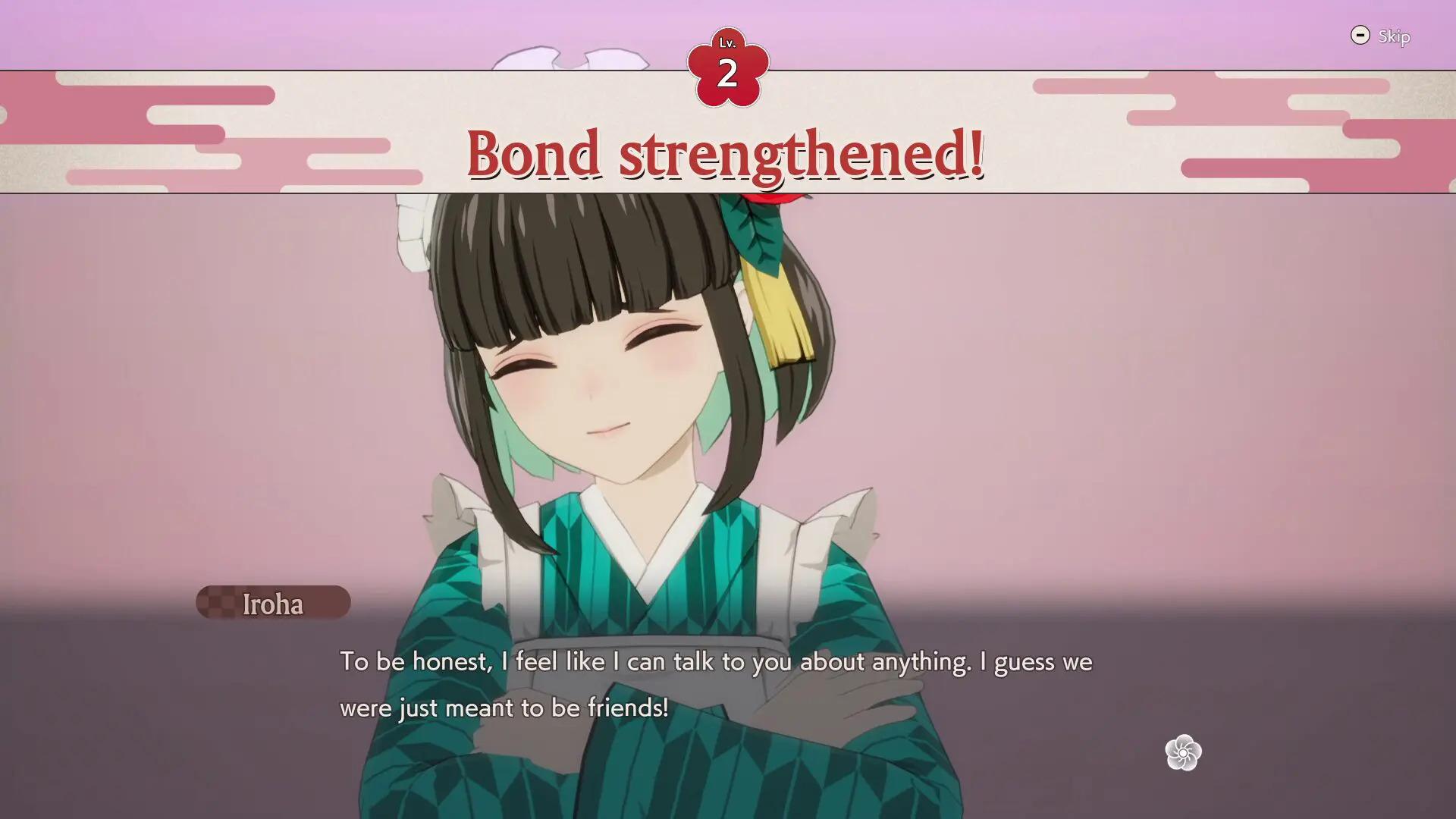
With so many things to do and so many relationships to build, both inside and outside each village, Guardians of Azuma is a long game. It will take you approximately 40 hours to complete the main storyline and 120+ hours to see everything Azuma has to offer. There’s enough content here to keep you busy for months.
Guardians of Azuma improves upon its immediate predecessor in several areas, including combat and romance. It also represents an improvement when it comes to performance, although at a cost. Perhaps because Rune Factory 5 suffered from so many technical issues on Switch — frame-rate drops, pop-in, and, at least in handheld mode, poor image quality — Marvelous has pared back the graphics considerably, delivering a smooth, stable experience on Switch 2. The downside? Very basic assets. There’s a flat texture-less quality to the game’s outdoor environments that’s off-putting. Now, keep in mind this doesn’t apply to the main characters and monsters, all of whom benefit from a soft cel-shaded look and excellent character designs from Atsushi Igarashi and Yongjian Jin. The world in which they operate, however, is anemic at times.
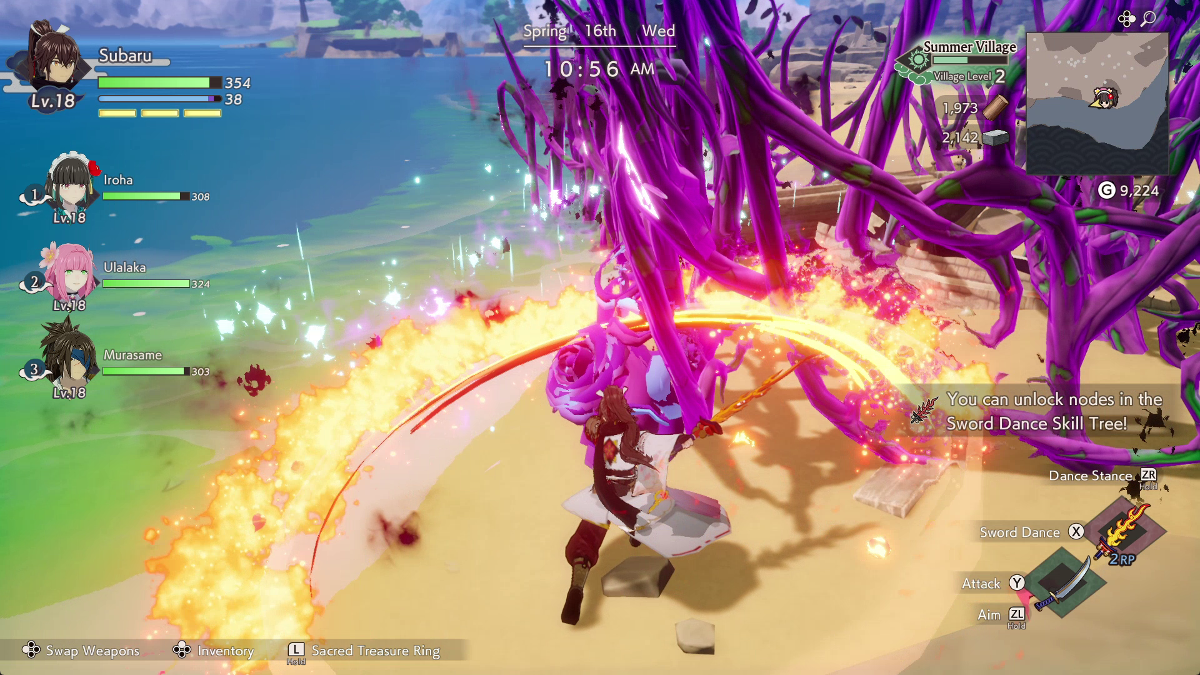
There’s nothing anemic about the game’s soundscape, thanks to atmospheric ambient noise, serene songs featuring traditional Japanese instruments like shamisen and taiko drum, and several lovely voice performances anchored by Brandon McInnis as Subaru and Suzie Yeung as Kaguya. Interestingly, all the advanced friendship and romance scenarios are fully voiced, demonstrating Marvelous went the extra mile in terms of voice acting, even if it cut a few corners visually.
Some visual inadequacies aren’t enough to tarnish the overall package in Guardians of Azuma, which ranks among the best Rune Factory games. By retaining the core components of the franchise — farming, fighting, and flirting — and infusing them with addictive town planning and people management aspects, deeper tactical and strategic combat options, and more meaningful romance pathways, Marvelous has pushed the franchise forward in a bold new direction. It will be exciting to see where Rune Factory 6 takes it from here.
This review is based on a digital copy of Rune Factory: Guardians of Azuma for the NS2, provided by the publisher.
More Articles




